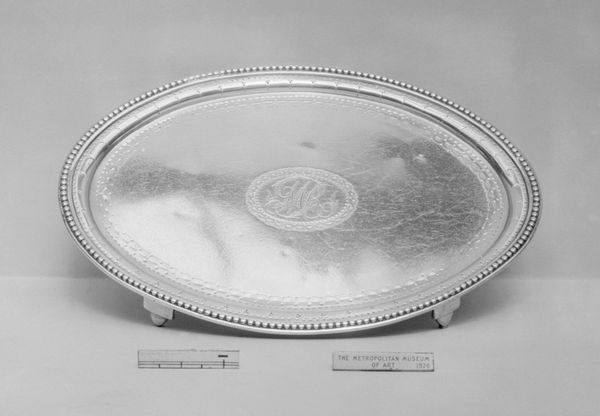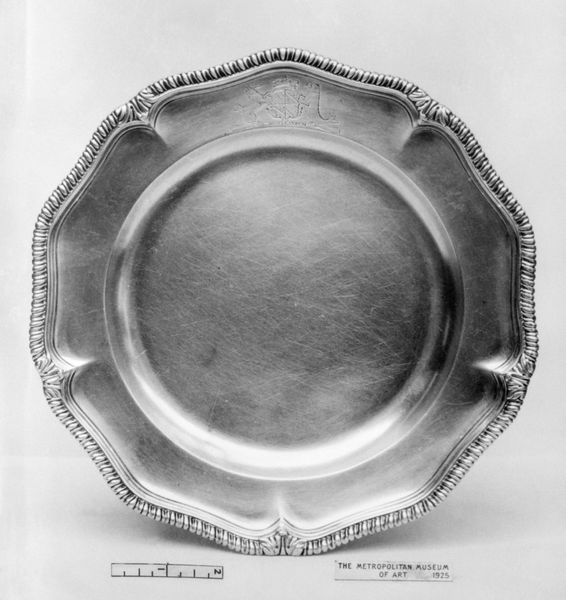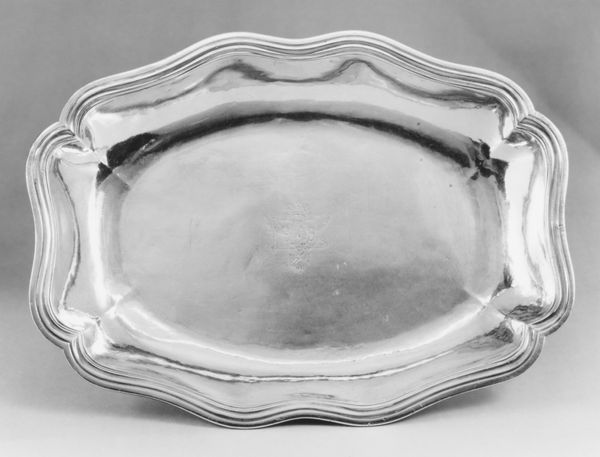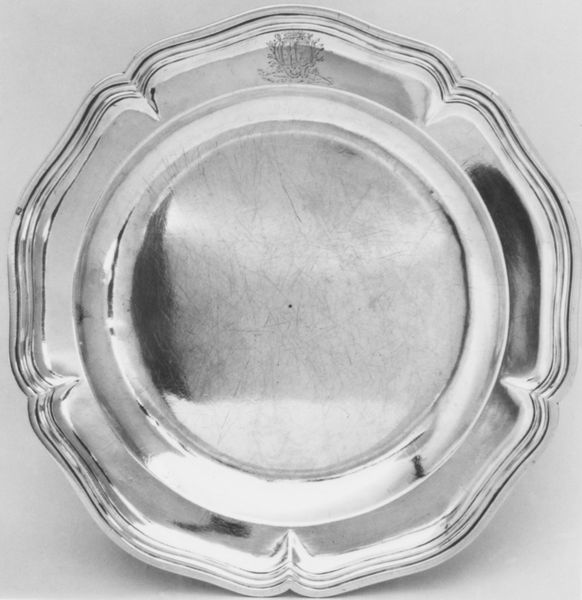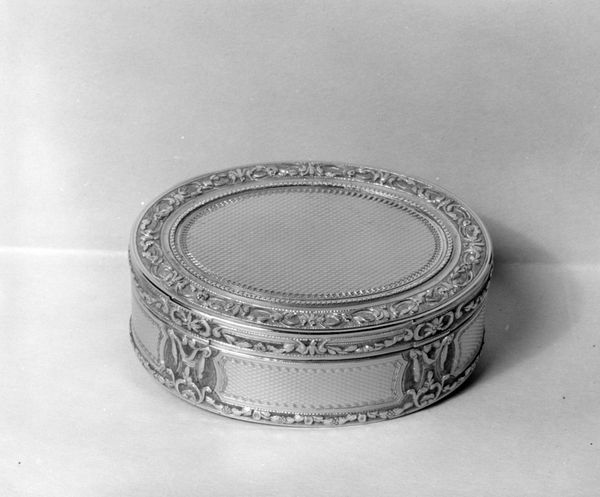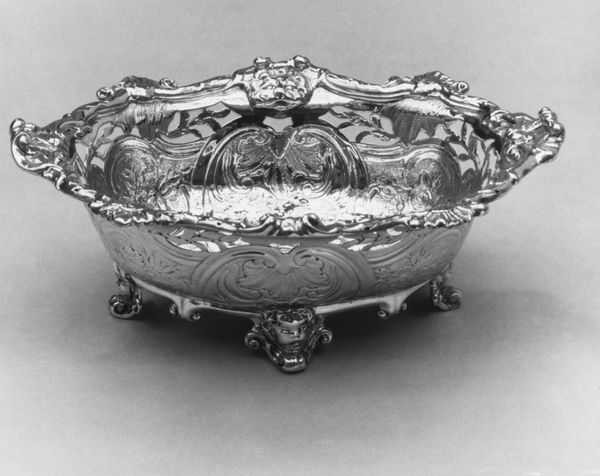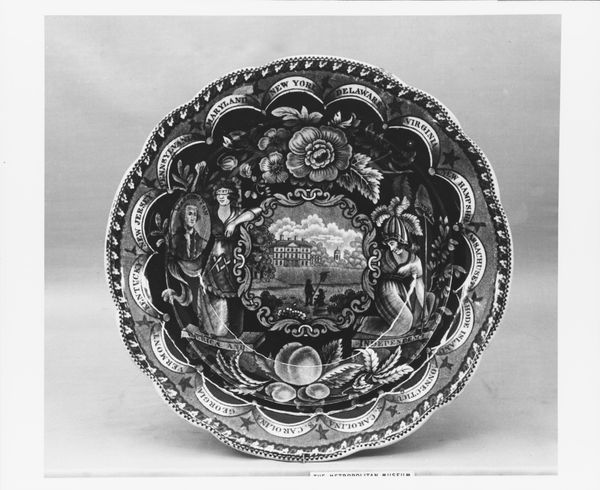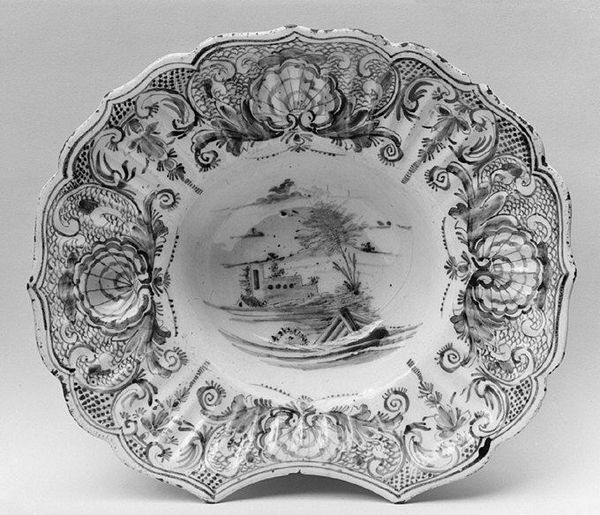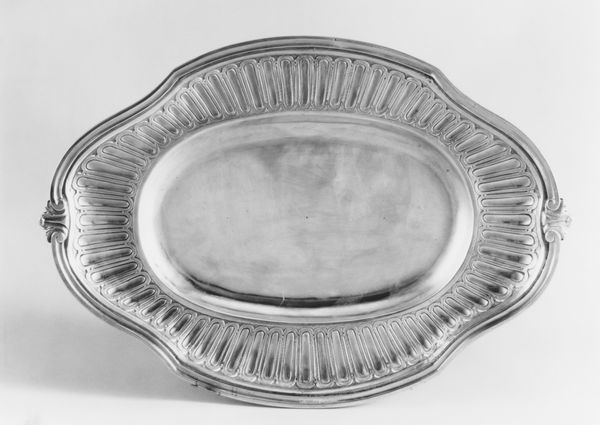
silver, metal, sculpture
#
silver
#
metal
#
stoneware
#
sculpture
#
decorative-art
#
rococo
Dimensions: 17 x 12 1/4 x 1 7/8 in. (43.2 x 31.1 x 4.8 cm)
Copyright: Public Domain
Editor: This elegant silver dish, created by Gallus David Apeller the Younger sometime between 1750 and 1775, strikes me with its elaborate Rococo ornamentation. It seems so much time went into crafting the piece, by hand! What do you make of it? Curator: From a materialist perspective, it's fascinating to consider the social implications embedded within this object. Silver, in the 18th century, was more than just a pretty metal; it represented wealth, status, and power. How do you think the means of obtaining and working with this silver affected its value? Editor: Well, I imagine the mining of silver was quite laborious and likely involved exploited labor. Plus, the silversmith's craft itself requires extensive training and skill. Curator: Exactly. And that labour is embedded in this object. Rococo ornamentation, while beautiful, speaks to a specific system of consumption, where surplus wealth allowed for extravagant display. Consider the raw material itself: how does silver as a material interact with food? Its reflectivity, its temperature. It affects the *dining experience* and who gets to participate. Editor: So, it's not just about aesthetics but also about the labor involved and the societal structures that enable such luxury. What would a simpler, less ornamented dish suggest in comparison? Curator: Precisely! A simpler design might indicate a different economic standing or even a conscious rejection of extravagant display. It's about connecting the material object to its broader social and economic context, tracing the web of labour, trade, and consumption. We can see a lot just from this! Editor: This has completely shifted how I see the dish; I never thought so much about the economics behind it! It is much more meaningful. Curator: Indeed! By considering the material and the processes involved, we move beyond simply admiring its beauty to understanding its significance as a product of its time.
Comments
No comments
Be the first to comment and join the conversation on the ultimate creative platform.


